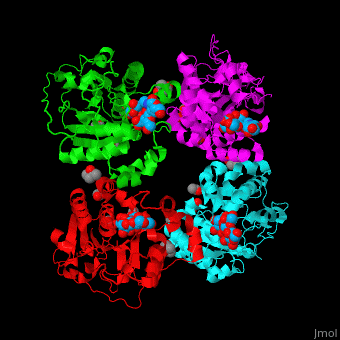Function
Sialyltransferase (SIT) is involved in maintaining or increasing cell surface sialysation which contributes to adhesive cellular interactions and thus to the growth and differentiation of hematopoietic progenitor cells[1]. Humans contain more than 20 different SIT differing in their substrate specificity, tissue distribution and various biochemical parameters[2].
- Alpha-2,3-sialyltransferase, Alpha-2,6-sialyltransferase, Alpha-2,8-sialyltransferase catalyze the transfer of sialyl from a CMP-linked sialic acid donor to a terminal alpha-2,3, alpha-2,6, alpha-2,8-linked sialic acid of N-linked oligosaccharides of olygoproteins[3],[4],[5] .
- Beta-galactoside alpha-2,6-sialyltransferase performs the final glycosylation in many glycoproteins by transferring a sialyl to a terminal galactose[6].
Relevance
Elevated SIT activity leads to overexpression of cell surface sialic acids and contributes to many disease developments such as cancer and inflammation[7].
Structural highlights
The biological assembly of α-2,3-sialyltransferase is (2x61). The at the C-terminal of SIT[8]. . Water molecules are shown as red spheres.
3D structures of sialyltransferase
Sialyltransferase 3D structures

